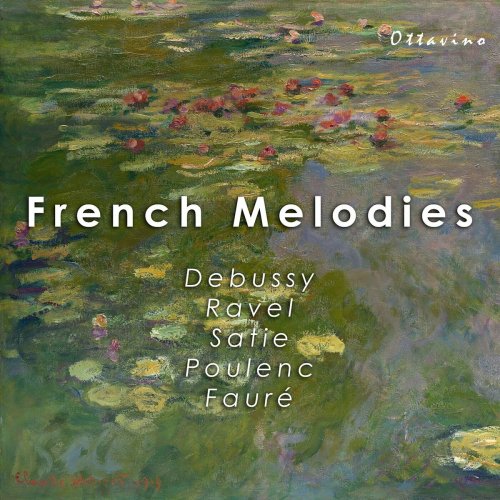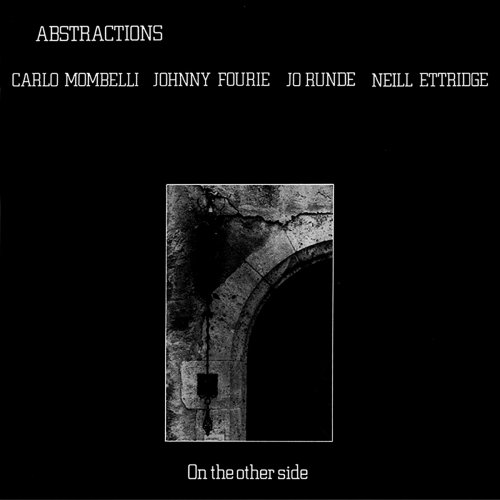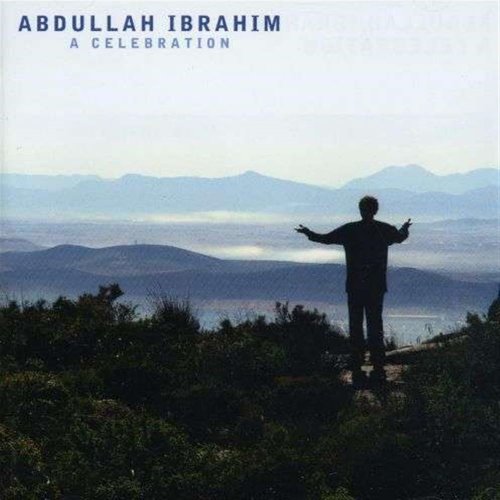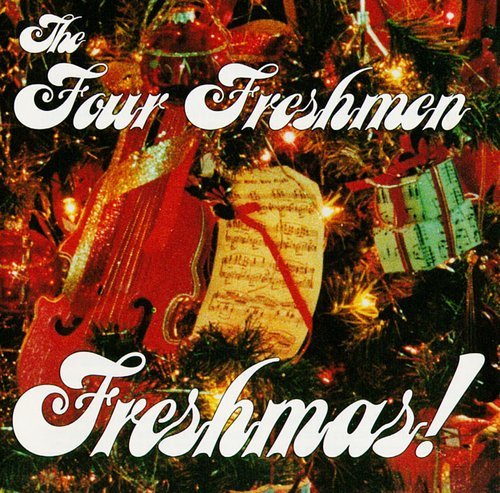Claude Debussy - French Melodies (2024)

Artist: Claude Debussy, Francis Poulenc, Erik Satie, Maurice Ravel, Gabriel Fauré
Title: French Melodies
Year Of Release: 2024
Label: UMG Recordings, Inc
Genre: Classical
Quality: FLAC (tracks)
Total Time: 215:10 min
Total Size: 654 MB
WebSite: Album Preview
Tracklist:Title: French Melodies
Year Of Release: 2024
Label: UMG Recordings, Inc
Genre: Classical
Quality: FLAC (tracks)
Total Time: 215:10 min
Total Size: 654 MB
WebSite: Album Preview
01. Poulenc: Sarabande for Guitar, FP 179
02. Ravel: Menuet in C-Sharp Minor, M. 42
03. Debussy: Children's Corner, CD 119: I. Doctor Gradus ad Parnassum
04. Avant-dernières pensées - Satie: Avant-dernières pensées - 1. Idylle, à Debussy
05. Ravel: Pièce en forme de habanera, M. 51 (Arr. Dumesnil for Solo Piano)
06. Fauré: Nell, Op. 18 No. 1 (Arr. Grainger)
07. Poulenc: Sonata for 4 Hands, FP 8: II. Rustique. Naïf et lent
08. 3 Gymnopédies - Satie: 3 Gymnopédies - No. 1 Lent et douloureux
09. Ravel: Menuet sur le nom d'Haydn, M. 58
10. Fauré: 8 Pièces brèves, Op. 84: VII. Allegresse in C Major
11. Satie: Croquis et agaceries d'un gros bonhomme en bois: I. Tyrolienne turque
12. Children's Corner, L. 113 - Debussy: Children's Corner, L. 113 - 5. The little shepherd
13. Poulenc: 8 Nocturnes, FP 56: No. 4 in C Minor. Bal fantôme
14. Ravel: Prélude in A Minor, M. 65
15. Dolly, Op. 56 - Fauré: Dolly, Op. 56 - 2. Mi-A-Ou
16. Alkan: 48 Esquisses, Op. 63, Book 2: No. 15, Tutti de concerto dans le genre ancien
17. Debussy: Pièce pour le Vêtement du blessé "Page d'album", CD 141
18. Satie: Croquis et agaceries d'un gros bonhomme en bois: II. Danse maigre (à la manière de ces messieurs)
19. Debussy: Morceau de concours, CD 117
20. Fauré: 9 Preludes, Op. 103: No. 8 in C Minor
21. Ravel: Valses nobles et sentimentales, M. 61: I. Modéré, très franc
22. Alkan: 48 Esquisses, Op. 63, Book 4: No. 37, Scherzettino
23. Préludes - Livre 1, L. 117 - Debussy: Préludes - Livre 1, L. 117 - 8. La fille aux cheveux de lin
24. Satie: Croquis et agaceries d'un gros bonhomme en bois: III. Españaña
25. Ravel: À la manière de Borodine, M. 63:1
26. Poulenc: Villanelle for Piccolo and Piano, FP 74
27. Debussy: Danse bohémienne, CD 4
28. Ravel: Valses nobles et sentimentales, M. 61: IV. Assez animé
29. Ravel: Le tombeau de Couperin, M. 68: IV. Rigaudon
30. Melodies Op. 23 - Fauré: Melodies Op. 23 - Notre amour
31. Alkan: 48 Esquisses, Op. 63, Book 2: No. 18, Liedchen
32. Mussorgsky: Pictures at an Exhibition: Promenade 2
33. Prokofiev: Visions fugitives, Op. 22: I. Lentamente
34. Alkan: 48 Esquisses, Op. 63, Book 4: No. 46, Le premier billet doux
35. Ma mère l'oye, M.60 - For Piano Duet, M.60 - Ravel: Ma mère l'oye, M.60 - For Piano Duet, M.60 - 1. Pavane de la Belle au bois dormant
36. Alkan: 48 Esquisses, Op. 63, Book 3: No. 31, Début de quatuor
37. Mussorgsky: Pictures at an Exhibition: V. Ballet of the Chickens in Their Shells
38. Alkan: 48 Esquisses, Op. 63, Book 4: No. 38, Les bons souhaits
39. Mussorgsky: Pictures at an Exhibition: Promenade 1
40. Valses nobles et sentimentales, M. 61 - Ravel: Valses nobles et sentimentales, M. 61 - 5. Presque lent - dans un sentiment intime (Live au Festival de musique de Montreux-Vevey - 1988)
41. Mussorgsky: Pictures at an Exhibition: Promenade 5
42. Prokofiev: Visions fugitives, Op. 22: IV. Animato
43. Ravel: Valses nobles et sentimentales, M. 61: III. Modéré
44. Alkan: 48 Esquisses, Op. 63, Book 1: No. 4, Les cloches
45. Prokofiev: Visions fugitives, Op. 22: IX. Allegretto tranquillo
46. Prokofiev: Visions fugitives, Op. 22: II. Andante
47. Ravel: Valses nobles et sentimentales, M. 61: V. Presque lent, dans un sentiment intime
48. Mussorgsky: Pictures at an Exhibition: Promenade 4
49. Falla: 7 Canciones populares españolas: No. 7, Polo (Arr. Halffter)
50. Alkan: 48 Esquisses, Op. 63, Book 1: No. 12, Barcarollette
51. Alkan: 48 Esquisses, Op. 63, Book 3: No. 35, Musique militaire
52. Poulenc: 8 Improvisations, FP 63: No. 8 in A Minor
53. Alkan: Troisième recueil de chants, Op. 65: II. Esprits follets. Prestissimo
54. 8 pièces brèves, Op. 84 - Fauré: 8 pièces brèves, Op. 84 - 5. Improvisation in C sharp minor
55. Alkan: 48 Esquisses, Op. 63, Book 3: No. 36, Toccatina
56. Debussy: Le petit nègre "Cakewalk", CD 122
57. Petite suite pour piano (Quatre mains), L. 65 - Debussy: Petite suite pour piano (Quatre mains), L. 65 - 1. En bateau
58. Ravel: À la manière de Chabrier, M. 63:2
59. Alkan: 48 Esquisses, Op. 63, Book 2: No. 20, Petite marche villageoise
60. Alkan: 48 Esquisses, Op. 63, Book 1: No. 7, Le frisson
61. Poulenc: Nocturne No. 4 in C Minor "Bal fantôme", FP 56:4
62. 3 Gymnopédies - Satie: 3 Gymnopédies - 3. Lent et grave
63. Alkan: 48 Esquisses, Op. 63, Book 3: No. 30, Petit air dolent
64. Debussy: Rêverie, L. 68
65. Ravel: Violin Sonata No. 2 in G Major, M. 77: III. Perpetuum mobile. Allegro
66. Préludes - Book 2, L.123 - Debussy: Préludes - Book 2, L.123 - 5. Bruyères
67. Images oubliées, L. 87 - Debussy: Images oubliées, L. 87 - 2. Souvenirs du Louvre
68. Dolly, Op. 56 - Fauré: Dolly, Op. 56 - 3. Le Jardin de Dolly
69. 2 Arabesques, L. 66 - Debussy: 2 Arabesques, L. 66 - No. 1, Andante con moto
70. Debussy: Les soirs illuminés par l'ardeur du charbon
71. Gnossiennes - Satie: Gnossiennes - 5. Modéré
72. Dolly, Op. 56 - Fauré: Dolly, Op. 56 - 4. Kitty-Valse
73. Valses nobles et sentimentales, M. 61 - Ravel: Valses nobles et sentimentales, M. 61 - 2. Assez lent - avec une expression intense (Live au Festival de musique de Montreux-Vevey - 1988)
74. 6 Épigraphes antiques, L.131 - Debussy: 6 Épigraphes antiques, L.131 - 1. Pour invoquer Pan, dieu du vent d'été
75. Children's Corner, L. 113 - Debussy: Children's Corner, L. 113 - 4. The snow is dancing
76. Petite suite pour piano (Quatre mains), L. 65 - Debussy: Petite suite pour piano (Quatre mains), L. 65 - 3. Menuet
77. Ma mère l'oye, M.60 - For Piano Duet, M.60 - Ravel: Ma mère l'oye, M.60 - For Piano Duet, M.60 - 5. Le jardin féerique
78. Gnossiennes - Satie: Gnossiennes - 2. Avec étonnement
79. Ravel: Pavane pour une infante défunte, M.19
80. 4 Préludes - Satie: 4 Préludes - Premier prélude du Nazaréen
81. Children's Corner, L. 113 - Debussy: Children's Corner, L. 113 - 3. Serenade for the Doll (Live au Festival de musique de Montreux-Vevey - 1988)
82. Préludes - Book 1, L.117 - Debussy: Préludes - Book 1, L.117 - Danseuses de Delphes
83. Sonatine, M. 40 - Ravel: Sonatine, M. 40 - 2. Mouvement de menuet
84. Estampes, L. 100 - Debussy: Estampes, L. 100 - 1. Pagodes
85. Suite bergamasque, L. 75 - Debussy: Suite bergamasque, L. 75 - 3. Clair de lune
86. Debussy: La plus que lente, L. 121
87. Gnossiennes - Satie: Gnossiennes - 3. Lent
88. Images oubliées, L. 87 - Debussy: Images oubliées, L. 87 - 1. Lent (mélancolique et doux)
89. Pour le piano, CD 95 - Debussy: Pour le piano, CD 95 - II. Sarabande
90. Prokofiev: Visions fugitives, Op. 22: III. Allegretto
91. Ravel: Le tombeau de Couperin, M. 68: II. Fugue
92. Préludes - Book 1, L.117 - Debussy: Préludes - Book 1, L.117 - 6. Des pas sur la neige
93. Ravel: String Quartet in F Major, M. 35: IV. Vif et agité
94. Poulenc: Cello Sonata, FP 143: II. Cavatine. Très calme
95. Fauré: Cello Sonata No. 1 in D Minor, Op. 109: III. Allegro commodo (Version At a Faster Tempo)
Claude Debussy (born Achille-Claude Debussy) was among the most influential composers of the late 19th and early 20th centuries. His mature compositions, distinctive and appealing, combined modernism and sensuality so successfully that their sheer beauty often obscures their technical innovation. Debussy is considered the founder and leading exponent of musical Impressionism (although he resisted the label), and his adoption of non-traditional scales and tonal structures was paradigmatic for many composers who followed.
The son of a shopkeeper and a seamstress, Debussy began piano studies at the Paris Conservatory at the age of 11. While a student there, he encountered the wealthy Nadezhda von Meck (most famous as Tchaikovsky's patroness), who employed him as a music teacher to her children; through travel, concerts and acquaintances, she provided him with a wealth of musical experience. Most importantly, she exposed the young Debussy to the works of Russian composers, such as Borodin and Mussorgsky, who would remain important influences on his music.
Debussy began composition studies in 1880, and in 1884 he won the prestigious Prix de Rome with his cantata L'enfant prodigue. This prize financed two years of further study in Rome -- years that proved to be creatively frustrating. However, the period immediately following was fertile for the young composer; trips to Bayreuth and the Paris World Exhibition (1889) established, respectively, his determination to move away from the influence of Richard Wagner, and his interest in the music of Eastern cultures.
After a relatively bohemian period, during which Debussy formed friendships with many leading Parisian writers and musicians (not least of which were Mallarmé, Satie, and Chausson), the year 1894 saw the enormously successful premiere of his Prélude à l'après-midi d'un faune (Prelude to the Afternoon of a Faun) -- a truly revolutionary work that brought his mature compositional voice into focus. His seminal opera Pelléas et Mélisande, completed the next year, would become a sensation at its first performance in 1902. The impact of those two works earned Debussy widespread recognition (as well as frequent attacks from critics, who failed to appreciate his forward-looking style), and over the first decade of the 20th century he established himself as the leading figure in French music -- so much so that the term "Debussysme" ("Debussyism"), used both positively and pejoratively, became fashionable in Paris. Debussy spent his remaining healthy years immersed in French musical society, writing as a critic, composing, and performing his own works internationally. He succumbed to colon cancer in 1918, having also suffered a deep depression brought on by the onset of World War I.
Debussy's personal life was punctuated by unfortunate incidents, most famously the attempted suicide of his first wife, Lilly Texier, whom he abandoned for the singer Emma Bardac. However, his subsequent marriage to Bardac, and their daughter Claude-Emma, whom they called "Chouchou" and who became the dedicatee of the composer's Children's Corner piano suite, provided the middle-aged Debussy with great personal joys.
Debussy wrote successfully in most every genre, adapting his distinctive compositional language to the demands of each. His orchestral works, of which Prélude à l'après-midi d'un faune and La mer (The Sea, 1905) are most familiar, established him as a master of instrumental color and texture. It is this attention to tone color -- his layering of sound upon sound so that they blend to form a greater, evocative whole -- that linked Debussy in the public mind to the Impressionist painters.
His works for solo piano, particularly his collections of Préludes and Etudes, which have remained staples of the repertoire since their composition, bring into relief his assimilation of elements from both Eastern cultures and antiquity -- especially pentatonicism (the use of five-note scales), modality (the use of scales from ancient Greece and the medieval church), parallelism (the parallel movement of chords and lines), and the whole-tone scale (formed by dividing the octave into six equal intervals).
Pelléas et Mélisande and his collections of songs for solo voice establish the strength of his connection to French literature and poetry, especially the symbolist writers, and stand as some of the most understatedly expressive works in the repertory. The writings of Mallarmé, Maeterlinck, Baudelaire, and his childhood friend Paul Verlaine appear prominently among his chosen texts and joined symbiotically with the composer's own unique moods and forms of expression. ~ Allen Schrott
The son of a shopkeeper and a seamstress, Debussy began piano studies at the Paris Conservatory at the age of 11. While a student there, he encountered the wealthy Nadezhda von Meck (most famous as Tchaikovsky's patroness), who employed him as a music teacher to her children; through travel, concerts and acquaintances, she provided him with a wealth of musical experience. Most importantly, she exposed the young Debussy to the works of Russian composers, such as Borodin and Mussorgsky, who would remain important influences on his music.
Debussy began composition studies in 1880, and in 1884 he won the prestigious Prix de Rome with his cantata L'enfant prodigue. This prize financed two years of further study in Rome -- years that proved to be creatively frustrating. However, the period immediately following was fertile for the young composer; trips to Bayreuth and the Paris World Exhibition (1889) established, respectively, his determination to move away from the influence of Richard Wagner, and his interest in the music of Eastern cultures.
After a relatively bohemian period, during which Debussy formed friendships with many leading Parisian writers and musicians (not least of which were Mallarmé, Satie, and Chausson), the year 1894 saw the enormously successful premiere of his Prélude à l'après-midi d'un faune (Prelude to the Afternoon of a Faun) -- a truly revolutionary work that brought his mature compositional voice into focus. His seminal opera Pelléas et Mélisande, completed the next year, would become a sensation at its first performance in 1902. The impact of those two works earned Debussy widespread recognition (as well as frequent attacks from critics, who failed to appreciate his forward-looking style), and over the first decade of the 20th century he established himself as the leading figure in French music -- so much so that the term "Debussysme" ("Debussyism"), used both positively and pejoratively, became fashionable in Paris. Debussy spent his remaining healthy years immersed in French musical society, writing as a critic, composing, and performing his own works internationally. He succumbed to colon cancer in 1918, having also suffered a deep depression brought on by the onset of World War I.
Debussy's personal life was punctuated by unfortunate incidents, most famously the attempted suicide of his first wife, Lilly Texier, whom he abandoned for the singer Emma Bardac. However, his subsequent marriage to Bardac, and their daughter Claude-Emma, whom they called "Chouchou" and who became the dedicatee of the composer's Children's Corner piano suite, provided the middle-aged Debussy with great personal joys.
Debussy wrote successfully in most every genre, adapting his distinctive compositional language to the demands of each. His orchestral works, of which Prélude à l'après-midi d'un faune and La mer (The Sea, 1905) are most familiar, established him as a master of instrumental color and texture. It is this attention to tone color -- his layering of sound upon sound so that they blend to form a greater, evocative whole -- that linked Debussy in the public mind to the Impressionist painters.
His works for solo piano, particularly his collections of Préludes and Etudes, which have remained staples of the repertoire since their composition, bring into relief his assimilation of elements from both Eastern cultures and antiquity -- especially pentatonicism (the use of five-note scales), modality (the use of scales from ancient Greece and the medieval church), parallelism (the parallel movement of chords and lines), and the whole-tone scale (formed by dividing the octave into six equal intervals).
Pelléas et Mélisande and his collections of songs for solo voice establish the strength of his connection to French literature and poetry, especially the symbolist writers, and stand as some of the most understatedly expressive works in the repertory. The writings of Mallarmé, Maeterlinck, Baudelaire, and his childhood friend Paul Verlaine appear prominently among his chosen texts and joined symbiotically with the composer's own unique moods and forms of expression. ~ Allen Schrott


![The Mood Mosaic - Feelin' Funky! (2025) [Hi-Res] The Mood Mosaic - Feelin' Funky! (2025) [Hi-Res]](https://www.dibpic.com/uploads/posts/2025-12/1766822228_smv6og19mj83k_600.jpg)

![Limotges - The Burt Bacharach Songbook (2025) [Hi-Res] Limotges - The Burt Bacharach Songbook (2025) [Hi-Res]](https://www.dibpic.com/uploads/posts/2025-12/1766823472_l6enc3v4rcqoc_600.jpg)



